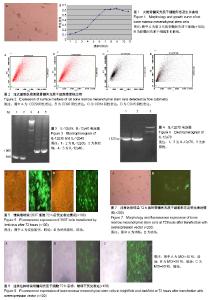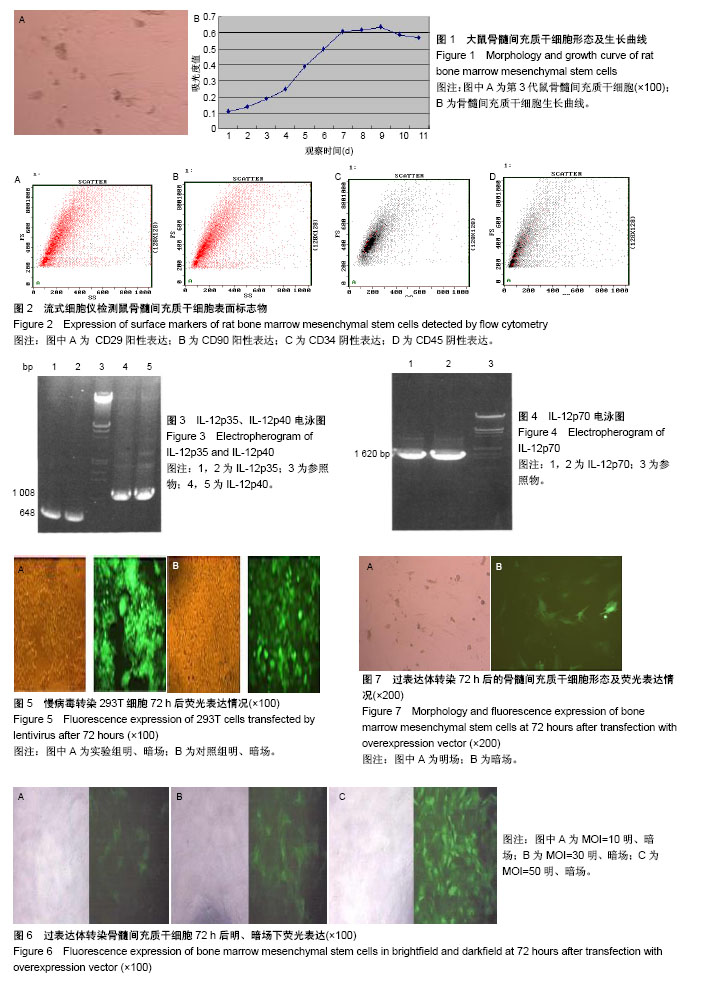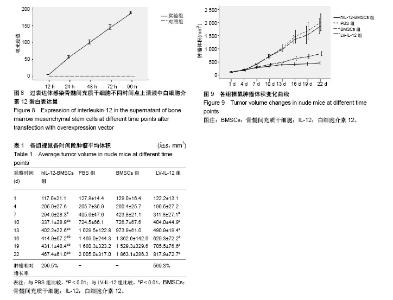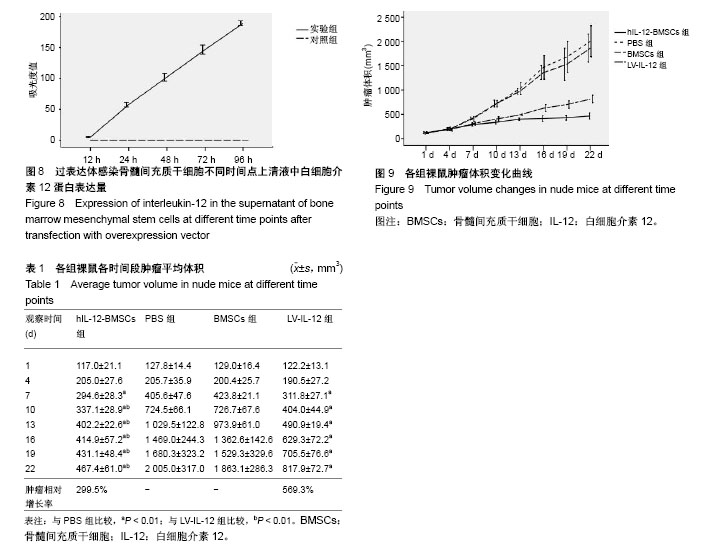| [1] Marchi LH, Paschoalin T, Travassos LR, et al. Gene therapy with interleukin-10 receptor and interleukin-12 induces a protective interferon-γ-dependent response against B16F10-Nex2 melanoma. Cancer Gene Ther. 2011;18(2):110-122.
[2] He XZ, Wang L, Zhang YY. An effective vaccine against colon cancer in mice: use of recombinant adenovirus interleukin-12 transduced dendritic cells. World J Gastroenterol. 2008;14(4):532-540.
[3] Arendt LM, Rudnick JA, Keller PJ, et al. Stroma in breast development and disease. Semin Cell Dev Biol. 2010;21(1):11-18.
[4] Ramdasi S, Sarang S, Viswanathan C. Potential of Mesenchymal Stem Cell based application in Cancer. Int J Hematol Oncol Stem Cell Res. 2015;9(2):95-103.
[5] 刘聪,张墨,Ji HL.间充质干细胞的恶性转化研究进展[J].中华细胞与干细胞杂志:电子版,2017,7(4):231-236.
[6] Todo T, Rabkin SD, Sundaresan P, et al. Systemic antitumor immunity in experimental brain tumor therapy using a multimutated, replication- competent herpes simplex virus. Hum Gene Ther. 1999;10(17): 2741-2755.
[7] 邹宁,来庆华,张积仁,等. 氩氦刀冷冻联合CpG寡脱氧核苷酸治疗小鼠皮下移植性结肠癌[J].中华胃肠外科杂志, 2010,13(7):532-535.
[8] Gately MK, Desai BB, Wolitzky AG, et al. Regulation of human lymphocyte proliferation by a heterodimeric cytokine, IL-12 (cytotoxic lymphocyte maturation factor). J Immunol. 1991;147(3):874-882.
[9] Kobayashi M, Fitz L, Ryan M, et al. Identification and purification of natural killer cell stimulatory factor (NKSF), a cytokine with multiple biologic effects on human lymphocytes. J Exp Med. 1989;170(3): 827-845.
[10] Bian ZY, Fan QM, Li G, et al. Human mesenchymal stem cells promote growth of osteosarcoma: involvement of interleukin-6 in the interaction between human mesenchymal stem cells and Saos-2. Cancer Sci. 2010;101(12):2554-2560.
[11] Mitrano T, Grob MS, Carrión F, et al. Culture and characterization of mesenchymal stem cells from human gingival tissue. J Periodontol. 2010;81(6):917-925.
[12] Engel MA, Neurath MF. Anticancer properties of the IL-12 family--focus on colorectal cancer. Curr Med Chem. 2010;17(29):3303-3308.
[13] Sospedra M, Martin R. Immunology of multiple sclerosis. Annu Rev Immunol. 2005;23:683-747.
[14] Collison LW, Delgoffe GM, Guy CS, et al. The composition and signaling of the IL-35 receptor are unconventional. Nat Immunol. 2012;13(3): 290-299.
[15] 周智锋,江金华,李洁羽,等. IL-12诱导肝癌微环境中NK 细胞活化发挥抗肿瘤作用[J].中国肿瘤生物治疗杂志, 2013,20(1) :93-98.
[16] Chan J, O'Donoghue K, de la Fuente J, et al. Human fetal mesenchymal stem cells as vehicles for gene delivery. Stem Cells. 2005;23(1):93-102.
[17] Del Vecchio M, Bajetta E, Canova S, et al. Interleukin-12: biological properties and clinical application. Clin Cancer Res. 2007;13(16): 4677-4685.
[18] Guida M, Casamassima A, Monticelli G, et al. Basal cytokines profile in metastatic renal cell carcinoma patients treated with subcutaneous IL-2-based therapy compared with that of healthy donors. J Transl Med. 2007;5:51.
[19] Chmielewski M, Kopecky C, Hombach AA, et al. IL-12 release by engineered T cells expressing chimeric antigen receptors can effectively Muster an antigen-independent macrophage response on tumor cells that have shut down tumor antigen expression. Cancer Res. 2011;71(17): 5697-5706.
[20] Ishiguro S, Akasu T, Fujimoto Y, et al. Second hepatectomy for recurrent colorectal liver metastasis: analysis of preoperative prognostic factors. Ann Surg Oncol. 2006;13(12):1579-1587.
[21] Yin X, Yan X, Yang Q, et al. Antitumor mechanism of recombinant murine interleukin-12 vaccine. Cancer Biother Radiopharm. 2010;25(3):263-268.
[22] 郭乔楠,陈意生.白介素12抗肿瘤作用的研究进展[J].肿瘤防治杂志, 2014, 9(3):353-355.
[23] Tian LL, Yue W, Zhu F, et al. Human mesenchymal stem cells play a dual role on tumor cell growth in vitro and in vivo. J Cell Physiol. 2011;226(7): 1860-1867.
[24] Tsai KS, Yang SH, Lei YP, et al. Mesenchymal stem cells promote formation of colorectal tumors in mice. Gastroenterology. 2011;141(3): 1046-1056.
[25] Shinagawa K, Kitadai Y, Tanaka M, et al. Mesenchymal stem cells enhance growth and metastasis of colon cancer. Int J Cancer. 2010; 127(10):2323-2333.
[26] 孙敬,洪杰华,郑世民.IL-12及其免疫调节作用[J].动物医学进展, 2010,31(2): 111-114.
[27] 王久香,康柏会.转染白细胞介素-12基因的脐带间充质干细胞对胃腺癌细胞的影响[J].广东医学,2015,36(13):1987-1990. |



